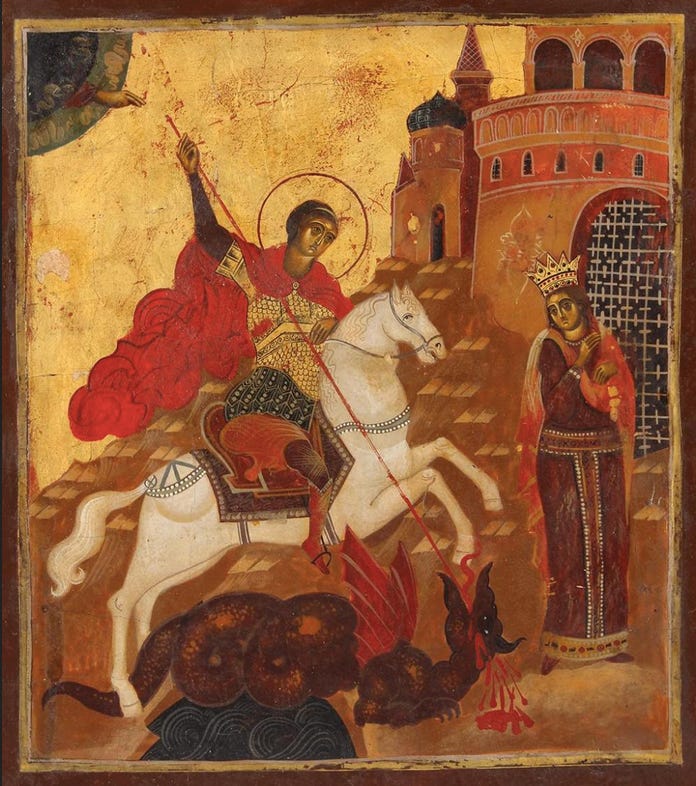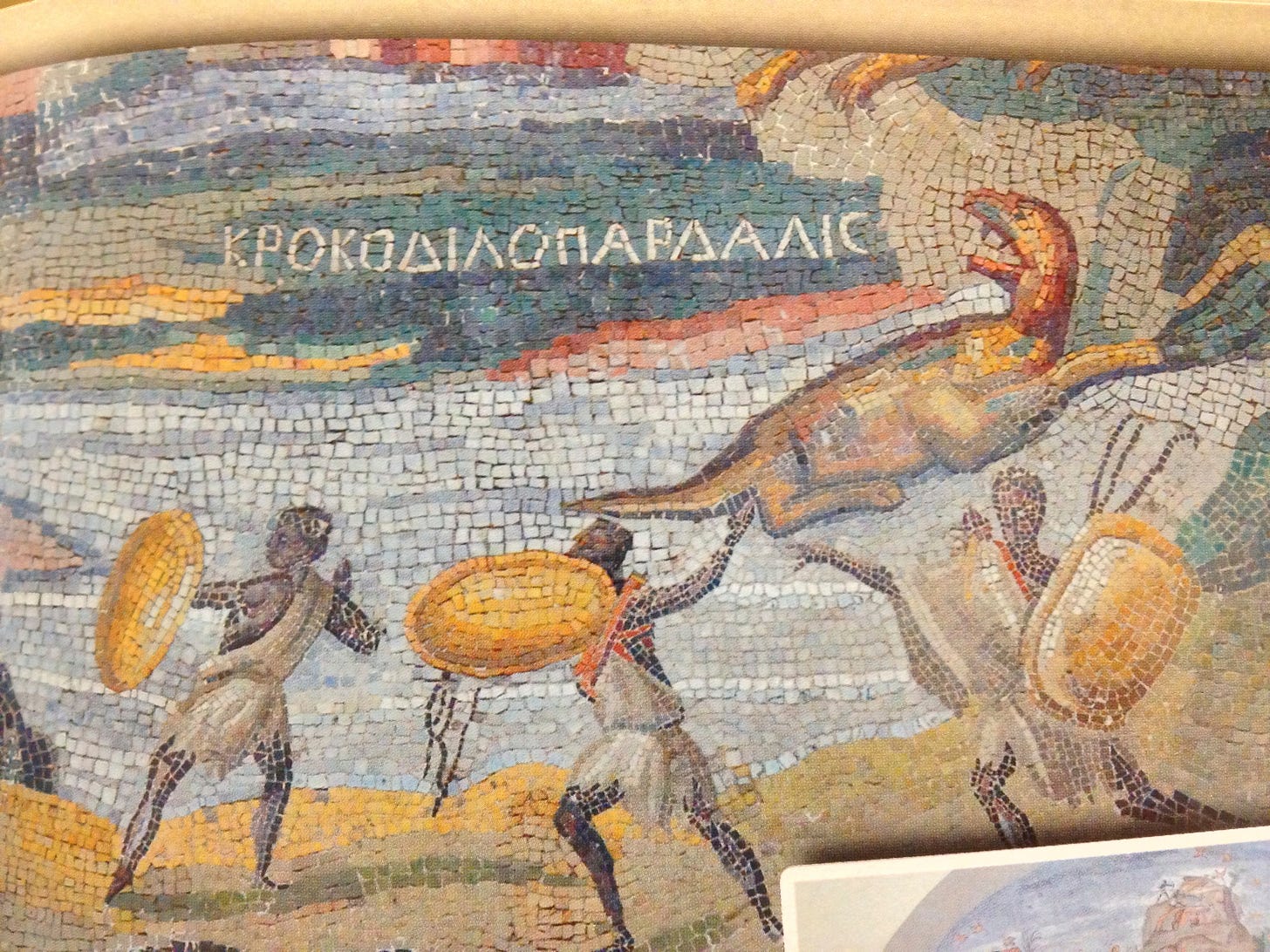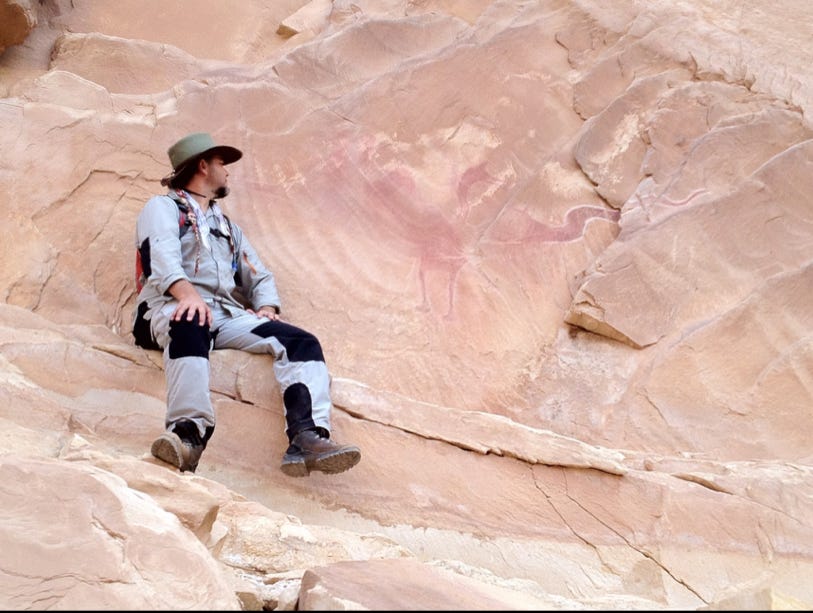Dragon Legends- Part 1
From a biblical perspective, land animals—including dinosaurs—were created on Day Six, the same day as humans (Genesis 1:24–26). The fossil record, which young-earth creationists believe primarily formed during the Flood, contains numerous dinosaur fossils, supporting the idea that humans and dinosaurs coexisted. For biblical creationists, this aligns with the Genesis account of history. According to Genesis 1, God created land animals—including dinosaurs—on Day Six, alongside humans. This suggests that humans and dinosaurs originally lived together. Furthermore, during the global Flood, representatives of all land-dwelling creatures were preserved on Noah’s Ark (Genesis 6:19–20), ensuring that dinosaurs would have survived to repopulate the Earth after the deluge—only about 4,300 years ago according to biblical chronology.
The question then arises: Were dragons real?
Dragons in the Bible: Some Bible translations mention "dragons" multiple times, though other versions use terms such as serpents or monsters (Psalm 74:13, Isaiah 27:1, Jeremiah 51:34). Given that the modern concept of dinosaurs did not emerge until the 19th century, these descriptions may refer to real creatures that closely resemble what we now classify as dinosaurs or large prehistoric reptiles.
Global Dragon Legends: Virtually every ancient culture contains legends of dragon encounters. These stories often describe creatures with features remarkably similar to those of known dinosaurs. Some accounts even predate modern paleontological discoveries of dinosaurs, raising the question of how ancient people could have described such creatures so accurately if they had never seen them.
Distortions Over Time: Over the centuries, dragon legends may have become exaggerated or distorted. For example, many depictions show dragons with four limbs and two wings—an anatomical structure that does not match any known fossil evidence of prehistoric reptiles. Paleontologist Jack Conrad notes that “it seems that six appendages are very unlikely in vertebrates.” This suggests that while the core of dragon legends may be based on real creatures, artistic and mythological embellishments may have altered the details.
Did you know that there is evidence that some dinosaurs survived into relatively recent history? While mainstream science argues that dinosaurs went extinct 65 million years ago, the presence of such a depiction—along with numerous other accounts of dragon-like creatures across cultures—raises compelling questions about conventional timelines.
The Bible does not specifically address the extinction of dinosaurs. However, young-earth creationists propose that they likely perished sometime after the flood due to a combination of dramatic environmental changes and relentless hunting by humans. According to this perspective, the post-flood world may have been drastically different from the pre-flood environment, leading to the gradual decline of dinosaur populations.
Back in ancient times they called them dragons. There are all sorts of stories all through history about people killing dragons. Beowulf slew a dragon and Gilgamesh slew a dragon and if you read all the stories about people killing dragons that are given all through history you’ll say, “You know it sure sounds like they’re killing dinosaurs here. The descriptions are very, very similar to what we know about dinosaurs.” Dinosaurs, after the flood, had a hard time surviving because the climate was indeed so different, things were just simply more hostile. There’s been overwhelming evidence that dinosaurs have lived with man all through human history, only they were called dragons back in those days. If you look at all the ancient literature, you see dragons mentioned all through there.
What happened, as the population of people began to grow after the flood, the popula- tion of big animals began to diminish. There are probably no grizzly bears in your town right now but I bet there might have been 500 years ago before people moved into that area. When people move into an area, they don’t want to live next door to a big ferocious animal and that’s what happened to the dinosaurs. They were killed off.
If you look at the Catholic Bible, you’ll find it’s got two extra chapters in the book of Daniel. In Daniel chapter 14, it tells about Daniel killing the dragon that the Babylonians worshiped. When they dug up part of the old city of Babylon that was ruined in 600 B.C., they found carvings of dinosaurs on the walls—dragons. Now why would they have dragons on the walls in Babylon in 600 B.C.? Well, they lived with them, at least they knew about them. The rumor is that King Nebuchadnezzar actually had a dinosaur in captivity in a cage. Alexander the Great reported in 300 B.C. that his soldiers were scared by dragons when they conquered part of India.
A Roman mosaic shows two long-necked dragons fighting. How did the Romans know about this in the second century after Christ? A famous man named Saint George was pictured slaying a dragon. He later was killed for his faith because he was a strong Christian. But there are all sorts of legends about Saint George killing dragons. The old Beowulf poem says Beowulf slew Grendel the Dragon by pulling off his arms. A Babylonian cylinder seal, found from about 600 B.C., showing a man pulling the arms off of a dragon. Apparently you could pull the small arms off and they would bleed to death. I don’t know. But there are stories and pictures on pottery of dinosaurs living with man all through human history. They certainly did not live millions of years ago. Even today many countries have a dragon as part of their emblem. There’s a Russian medallion showing a man killing a dragon. A Bulgarian postage stamp has a man killing a dragon.
St. George slaying the dragon
Roman mosaic shows two long-necked dragons fighting
A Surprising Perspective from Popular Science
The notion that dragons were real is often met with skepticism, particularly by those who subscribe to an old-earth perspective. The idea that dragons might be mankind’s distorted recollections of dinosaurs is frequently dismissed. However, a Popular Science article, written from an evolutionary standpoint, indirectly acknowledges that many biological traits attributed to dragons exist in the real world—though not necessarily within a single species.
Journalist Bjorn Carey notes that “most classic dragon characteristics do exist in other species.” While Carey’s article does not explore the creationist explanation for dragon legends, his observations lend credibility to the idea that dragon-like creatures could have existed.
For example:
Wings and Flight: The pterosaur Quetzalcoatlus had an impressive 30-foot wingspan, making it one of the largest flying reptiles known to science. According to paleontologist Jack Conrad of the American Museum of Natural History, such a wingspan could account for the dragon-like creatures described in ancient myths.
Tough Armor: The thick, scale-covered hide of dragons could be likened to that of alligators, which have bony plates embedded in their skin. Historical accounts suggest alligator skin was so resilient that it could even repel musket balls.
A mummified Nodosaur- Alberta, Canada
Fire-Breathing Capabilities: While no known modern animal can breathe fire, some beetles, such as the bombardier beetle, are capable of shooting caustic chemicals from their abdomens, which can burn human skin. Carey suggests that it is “not totally out of the question that some animal at some point in time could make a flammable liquid.” One of the intriguing "dinosaur" petroglyphs near Middle Mesa in Wupatki National Park is known as "Puff the Magic Dragon." This carving appears to depict a fire-breathing dinosaur. While petroglyphs cannot be precisely dated, this particular engraving is believed to be at least several hundred years old.
"Puff the Magic Dragon"- Wupatki National Park- located in north-central Arizona, approximately 30 miles north of Flagstaff
"The Nile Mosaic of Palestrina" — This intricate Roman floor mosaic portrays a sweeping panorama of the Nile River, illustrating scenes from Egypt to Ethiopia. (Reference: book titled “Light of the Past"- a collection of essays edited by Marshal B. Davidson, exploring the impact of history on contemporary life)
Zippori, also known as Sepphoris, is a historically rich archaeological site located in the Lower Galilee region of Israel. Zippori is renowned for its intricate mosaics, notably the "Mona Lisa of the Galilee," a depiction of a woman's face found in a Roman villa. Other significant mosaics include those in the Nile House, illustrating the Nile River's journey from Egypt to Ethiopia.
Pterodactyl Pictograph Black Dragon Canyon- located in the San Rafael Swell region of central Utah. One of the main attractions of Black Dragon Canyon is the Black Dragon Pictograph Panel. This panel features red pictographs attributed to the ancient Barrier Canyon culture and the Fremont culture.
If you loved this article, you’ll love seeing the video “Dinosaur Pictograph: Kachina Bridge”, the film “Forbidden History of Dinosaurs” and our “Out of Place Artifacts” Digital Library. Be sure to head over to our Ancient Pathways Patreon site.
Thank you for your support for this Substack!
PS. If you loved this article, you’ll love seeing “Dinosaur Pictograph: Kachina Bridge”, the film “Forbidden History of Dinosaurs” and our “Out of Place Artifacts” Digital Library. Be sure to head over to our Ancient Pathways Patreon site.














